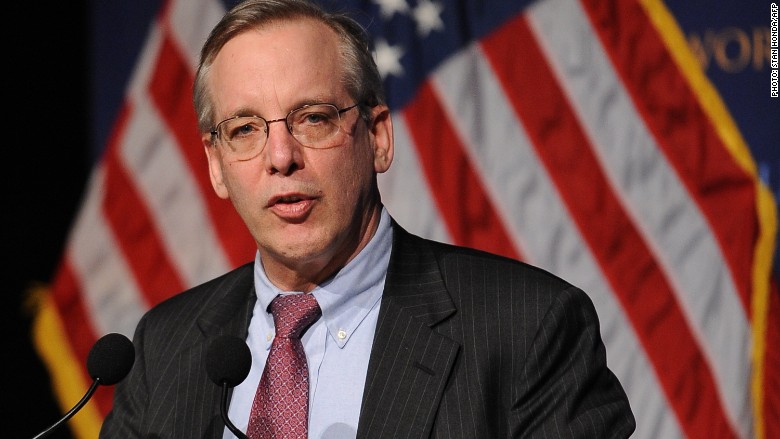
America's central bank could soon change course.
The Federal Reserve's leaders predicted in December that they would raise rates about four times this year. But the Fed is now thinking twice after stocks and oil prices were rocked by volatility in January and February.
"I have marked down my growth outlook very modestly," New York Federal Reserve President Bill Dudley said at a conference in Hangzhou, China, on Tuesday. If the volatility continues, "it could potentially lead to a more significant downgrade to my outlook."
Translation: don't expect a rate hike in March -- the likely starting point if the Fed were to raise rates four times in 2016. In fairness, Fed officials are allowed to change their mind: leaders have been clear that they are not on a preset course.
Expectations for March were already low and Dudley's comments Tuesday all but confirmed them with his comments.
The Fed's committee meets in two weeks. The key now seems to be how much it revises down its rate hike plans, if at all.
Related: Market mayhem: Central banks may be fueling the fire
The Fed raised rates in December for the first time in nearly a decade. The rate hike, known as "liftoff," was a signal that the Fed was comfortable with how much the U.S. economy had recovered since the Great Recession.
But U.S. stocks have fallen 4% in two months and oil prices have crashed to as low as $26 a barrel. That volatility could force the Fed to pump the brakes on its plans this year.
Ironically, the Fed's two key measures -- employment and steady inflation -- are heading in the right direction. Unemployment fell to 4.9% in January, the lowest level since 2008. And inflation in January finally started moving towards the Fed's 2% goal after months of being dormant.
For now, those gains don't appear to be enough to prevent the Fed from slowing down its rate hike plans.
"The balance of risks to my growth and inflation outlooks may be starting to tilt slightly to the downside," Dudley said.


